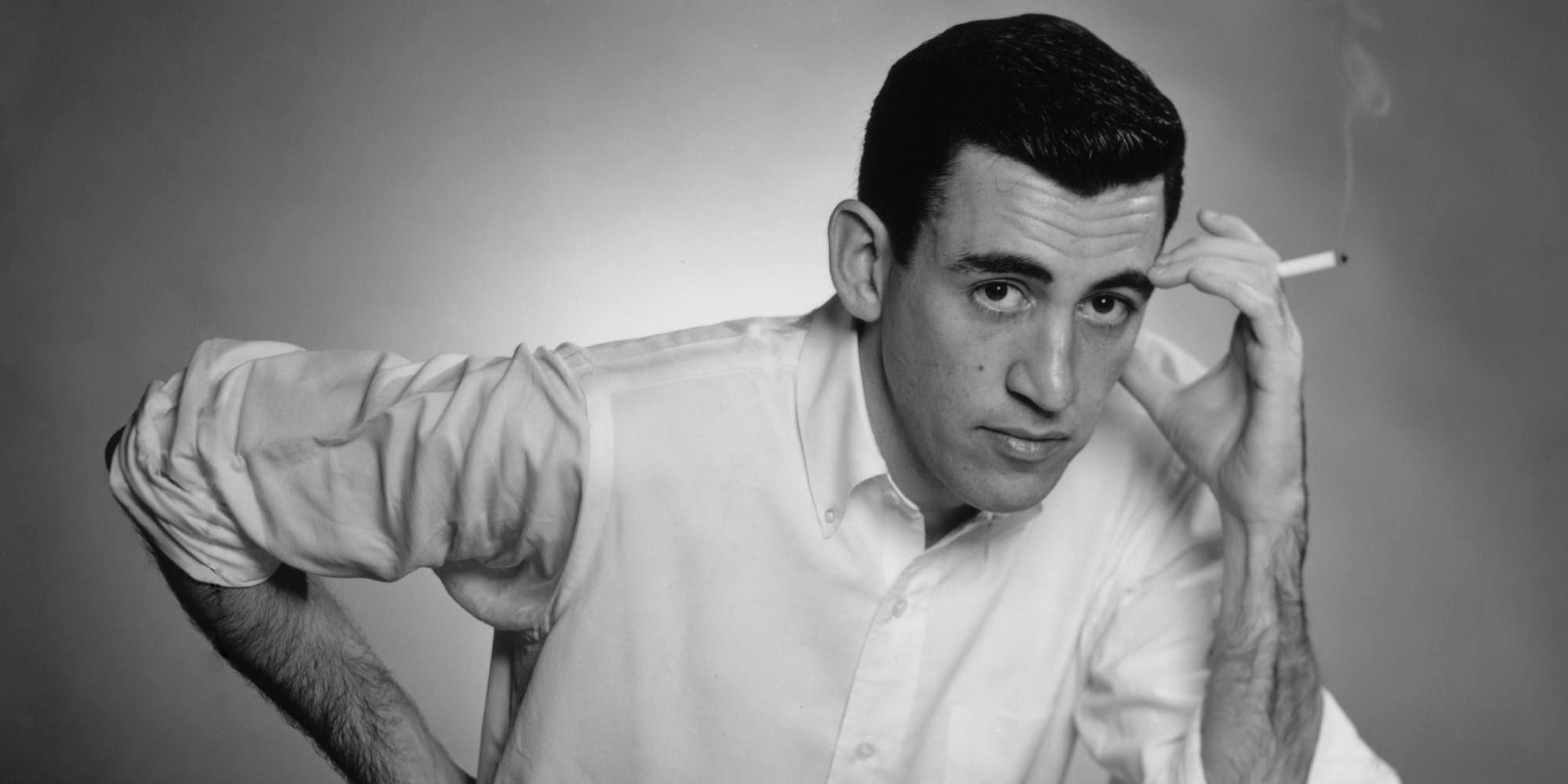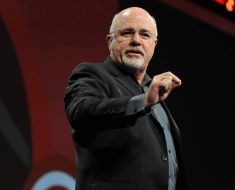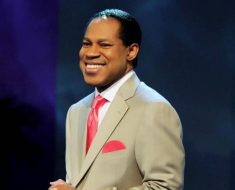
Jerome David Salinger net worth is $20 Million. Also know about Jerome David Salinger bio, salary, height, age weight, relationship and more …
Jerome David Salinger Wiki Biography
J. D. Salinger was born as Jerome David Salinger on the 1st January 1919, in New York City, USA, and was an author best known for his bestseller entitled “The Catcher in the Rye” (1951), but published many more stories and books. Salinger’s career started in 1940 and ended in 1965. He passed away in 2010.
Have you ever wondered how rich J.D. Salinger was at the time of his death? According to authoritative sources, it has been estimated that Salinger’s net worth was as high as $20 million, an amount earned through his successful career as a writer. In addition to writing books, Salinger also worked for numerous magazines including The New Yorker, which improved his wealth.
J. D. Salinger was born into a Jewish family, the son of Marie and Sol Salinger, who was a rabbi for the Adath Jeshurun congregation in Louisville, Kentucky, and worked as a kosher cheese salesman. Salinger grew up in New York with his sister Doris, and went to public schools on the West Side of Manhattan before moving to the private McBurney School in 1932. Later, J. D. went to the Valley Forge Military Academy in Wayne, Pennsylvania, from where he graduated in 1936, and then enrolled at New York University, but dropped out the next year.
Salinger also studied at the Ursinus College in Collegeville, Pennsylvania, but didn’t stay for long, dropping out after only one semester and moving to the Columbia University School of General Studies in 1939. There, his writing mentor was Whit Burnett, a long-time editor of Story magazine, who released Salinger’s debut story entitled “The Young Folks” in 1940. He then wrote three more short stories: “Go See Eddie” (1940), “The Heart of a Broken Story” (1941), and “The Hang of It” (1941), before being drafted into the army, joining the 12th Infantry Regiment, 4th Infantry Division during the World War II.
He was assigned to the counter-intelligence division, helping to interrogate prisoners thanks to his proficiency in German and French; he served in five campaigns, earning Staff Sergeant rank. Salinger continued to submit his stories, and some of them were published in The New Yorker magazine, such as “Personal Notes of an Infantryman” (1942), “The Long Debut of Lois Taggett” (1942), and “The Varioni Brothers” (1943). J. D. continued with “Both Parties Concerned” (1944), “Soft-Boiled Sergeant” (1944), “Last Day of the Last Furlough” (1944), and “Once a Week Won’t Kill You” (1944). When returned from the war, Salinger had many of his works rejected and unpublished, but he still managed to release “A Boy in France” (1945), “This Sandwich Has No Mayonnaise” (1945), “Elaine” (1945), “The Stranger” (1945), and “I’m Crazy” (1945). By the end of the ‘40s, Salinger had written “Slight Rebellion of Madison” (1946), “A Young Girl in 1941 with No Waist at All” (1947), “The Inverted Forest” (1947), “Blue Melody” (1948), and “A Girl I Knew” (1948), which contributed to his net worth.
In 1951, Salinger’s biggest hit – “The Catcher in the Rye” – was published, and to date has recorded sales of over 10 million copies worldwide, making Salinger a multi-millionaire. Many film directors wanted to adapt the piece to the screen, but Salinger refused them all, including Samuel Goldwyn, Billy Wilder, Harvey Weinstein, and Steven Spielberg. In 1953, his second book called “Nine Stories” came out, and as the title suggests, it is composed of nine stories: “A Perfect Day for Bananafish”, “Uncle Wiggily in Connecticut”, “Just Before the War with the Eskimos”, and “The Laughing Man”. Other stories from the book are “Down at the Dinghy”, “For Esmé—with Love and Squalor”, “Pretty Mouth and Green My Eyes”, “De Daumier-Smith’s Blue Period”, and “Teddy”.
In 1961, his next book “Franny and Zooey” was released, and in 1963, Salinger published “Raise High the Roof Beam, Carpenters and Seymour: An Introduction”. His last published work was the story called “Hapworth 16, 1924”, which was released in 1965.
Salinger actually continued to write, apparently just for his own pleasure, and is rumoured to have completed a further 15 novels, all going unpublished. Requests to publish biographies and adapt his books for films were also invariably refused.
Regarding his personal life, J. D. Salinger was married to Sylvia Welter from 1945 to 1947, and then married Claire Douglas in 1955 with whom he had two children, but they divorced in 1967. From 1988, he was in a marriage with Colleen O’Neill. Salinger struggled with unwanted attention, never liked the publicity and wasn’t interested in it, so in 1953 he moved from his New York apartment to Cornish, a small town in New Hampshire. J. D. died of natural causes in January 2010 in Cornish.
IMDB Wikipedia $20 million 1919 1919-1-1 2010 American Billy Wilder Capricorn Claire Douglas m. 1955–1967 Colleen O’Neill m. 1988–2010 Columbia University Cornish Doris Salinger Harvey Weinstein J.D. Salinger Net Worth January 1 January 27 Jerome David Salinger Margaret Salinger Matt Salinger McBurney School Miriam Salinger Miscellaneous Crew New Hampshire New York New York City New York University Samuel Goldwyn Sol Salinger Steven Spielberg Sylvia Welter m. 1945–1947 United States Ursinus College USA Valley Forge Military Academy and College Writer
Jerome David Salinger Quick Info
| Full Name | J. D. Salinger |
| Net Worth | $20 Million |
| Date Of Birth | January 1, 1919 |
| Died | January 27, 2010, Cornish, New Hampshire, United States |
| Place Of Birth | New York City, New York, USA |
| Profession | Writer, Miscellaneous Crew |
| Education | Columbia University, New York University, Ursinus College, Valley Forge Military Academy and College, McBurney School |
| Nationality | American |
| Spouse | Colleen O’Neill (m. 1988–2010), Claire Douglas (m. 1955–1967), Sylvia Welter (m. 1945–1947) |
| Children | Matt Salinger, Margaret Salinger |
| Parents | Miriam Salinger, Sol Salinger |
| Siblings | Doris Salinger |
| IMDB | http://www.imdb.com/name/nm0758409/ |
| Nominations | National Book Award for Fiction, National Book Award for Fiction |
| Movies | Pari, Fragmento |
Jerome David Salinger Trademarks
- Reclusive personality.
- His characters are often young people or adolescents.
Jerome David Salinger Quotes
- All Mothers are a little insane.
- I love to write, but I write just for my own pleasure. There is a marvelous peace in not publishing.
- What I like best is a book that’s at least funny once in a while. What really knocks me out is a book that, when you’re all done reading it, you wish the author that wrote it was a terrific friend of yours and you could call him up on the phone whenever you felt like it. That doesn’t happens much though.
- I’m aware that many of my friends will be saddened and shocked, or shock-saddened, over some of the chapters in ‘The Catcher in the Rye’. Some of my best friends are children. In fact, all my best friends are children. It’s almost unbearable for me to realize that my book will be kept on a shelf, out of their reach.
- There’s no more to Holden Caulfield. Read the book again. It’s all there. Holden Caulfield is only a frozen moment in time.
- I’m quite illiterate, but I read a lot.
Jerome David Salinger Important Facts
- His novel “Catcher in the Rye” is mentioned in Billy Joel’s song “We didn’t start the fire”.
- His family nickname was “Sonny”. He had a sister, Doris, who was six years older.
- J.D. Salinger’s father’s family originally came from Sudargas, a small shtetl (Jewish village), which was then located in the Russian Empire near the present day border of Poland and Lithuania. His great-grandfather Hyman Joseph Salinger moved from Sudargas to the town of Taurage when he married the daughter of a prominent family. Hyman’s son Simon F. Salinger emigrated to the United States in 1881, marrying Fannie Copland, a Lithuanian immigrant living in Wilkes-Barre, Pennsylvania. Simon Salinger went to medical school and became a physician. When he died in 1960, he was just shy of his 100th birthday. J.D. Salinger’s father Solomon was born in 1887, the second child of five children.
- It was rumored that J.D. Salinger’s mother Miriam was born in County Cork, Ireland, likely fueled by an erroneous assertion in a 1963 “Life Magazine” article that she was Scotch-Irish. This led to a further rumor that Miriam’s Irish Catholic parents shunned her and refused to speak to her after marrying the Jew Solomon Salinger. Salinger’s sister Doris actually believed that their mother had been born in Ireland. In actuality, Miriam’s parents were dead by the time she married. She was born Marie Jillich (she took the name Miriam when she converted to Judaism upon her marriage) in Atlantic, Iowa on May 11, 1891. Miriam’s paternal grandfather George Lester Jillich, Sr. was the son of German immigrants, and her paternal grandmother Mary Jane Bennett was Anglo-Saxon. George, Sr. was a successful grain merchant whose son George, Jr. (Miriam’s father) worked in the family business. Miriam’s mother, Nellie McMahon, a Kansas City native, was the daughter of immigrants from Ireland. Miriam’s father died in 1909, the year before she met Solomon Salinger (a Chicago movie theater manager). Miriam’s mother Nellie died before J.D. Salinger was born in 1919. Solomon Salinger’s parents thought that the fair-skinned, red-haired Marie (as she was then known before her conversion) resembled a “little Irisher”.
- Suffered from post-traumatic stress disorder after returning from World War II.
- Served in a U.S. Army counter-Intelligence division in World War II.
- Was of Scottish, German, and Irish descent on his mother’s side.
- Had two grandchildren by his son Matt.
- A big fan of classic black-and-white movies.
- Used homeopathic medicines for most of his life.
- Shortly after purchasing his home, he had an eight-foot-tall wall built around it.
- Did most of his writing in a concrete bunker. His wife and children were forbidden to enter it.
- When his wife divorced him in 1966, she stated that Salinger refused to communicate with her, sometimes for weeks on end.
- A neighbor once went to his house to see if Salinger would contribute to a local charity. Salinger met him in the driveway with a gun in his hand and told the man to go away.
- His works are one of many literary references to be found in Daniel Handler’s “A Series of Unfortunate Events” books. Salinger wrote a short story called “For Esmé – with Love and Squalor”. “The Ersatz Elevator” introduces two characters named Jerome and Esme Squalor. Jerome is named after Salinger himself.
- Mark David Chapman was obsessed with “Catcher in the Rye” and was found calmly reading the book when he was arrested for the murder of John Lennon, lead singer of The Beatles.
- Despite stating his hatred for technology in his novel “The Catcher in the Rye,” he has a computer in his home as well as an AOL e-mail account.
- Sean Connery’s character in Finding Forrester (2000) is based on J.D. Salinger.
- Father of Margarete Salinger and Matt Salinger; father-in-law of Betsy Salinger.
- The character Terence Mann in Field of Dreams (1989) (based on “Shoeless Joe” by W.P. Kinsella) is actually based on J.D. Salinger.
- Was so incensed by Hollywood’s treatment of his story “Uncle Wiggly in Connecticut” that he has refused to sell the movie rights to any of his stories to Hollywood. It is reported that his last will and testament has a stipulation blocking any Hollywood adaptations of his works after his death.
Jerome David Salinger Filmography
| Title | Year | Status | Character | Role |
|---|---|---|---|---|
| Divan dan za bananaribe | 2014 | Short short story | Writer | |
| Un día perfecto para el pez plátano | 2002 | Short story | Writer | |
| The Catcher | 2001 | Short original author | Writer | |
| Pari | 1995 | novel “Franny and Zooey” – unauthorized adaptation | Writer | |
| Malena | 1993 | Short story | Writer | |
| Fragmento | 1984 | Short novel | Writer | |
| My Foolish Heart | 1949 | story “Uncle Wiggily in Connecticut” | Writer | |
| Above Ground | 2007 | Short inspired by | Miscellaneous | |
| Someone’s Knocking at the Door | 2009 | special thanks | Thanks | |
| Salinger | 2013 | Documentary | Himself | Archive Footage |
| J D Salinger Doesn’t Want to Talk | 1999 | TV Movie | Himself | Archive Footage |





